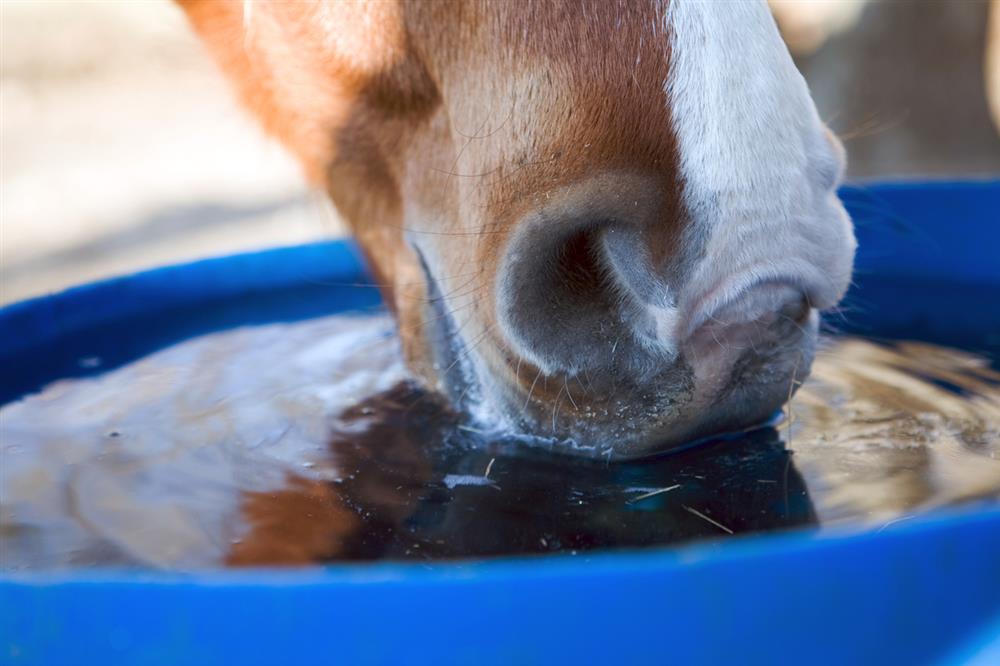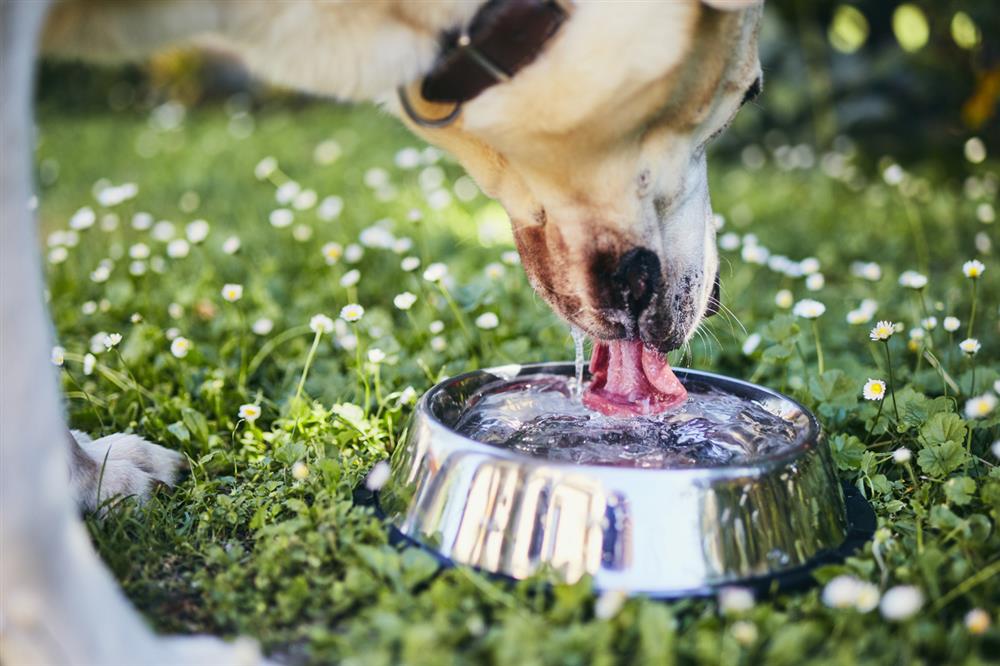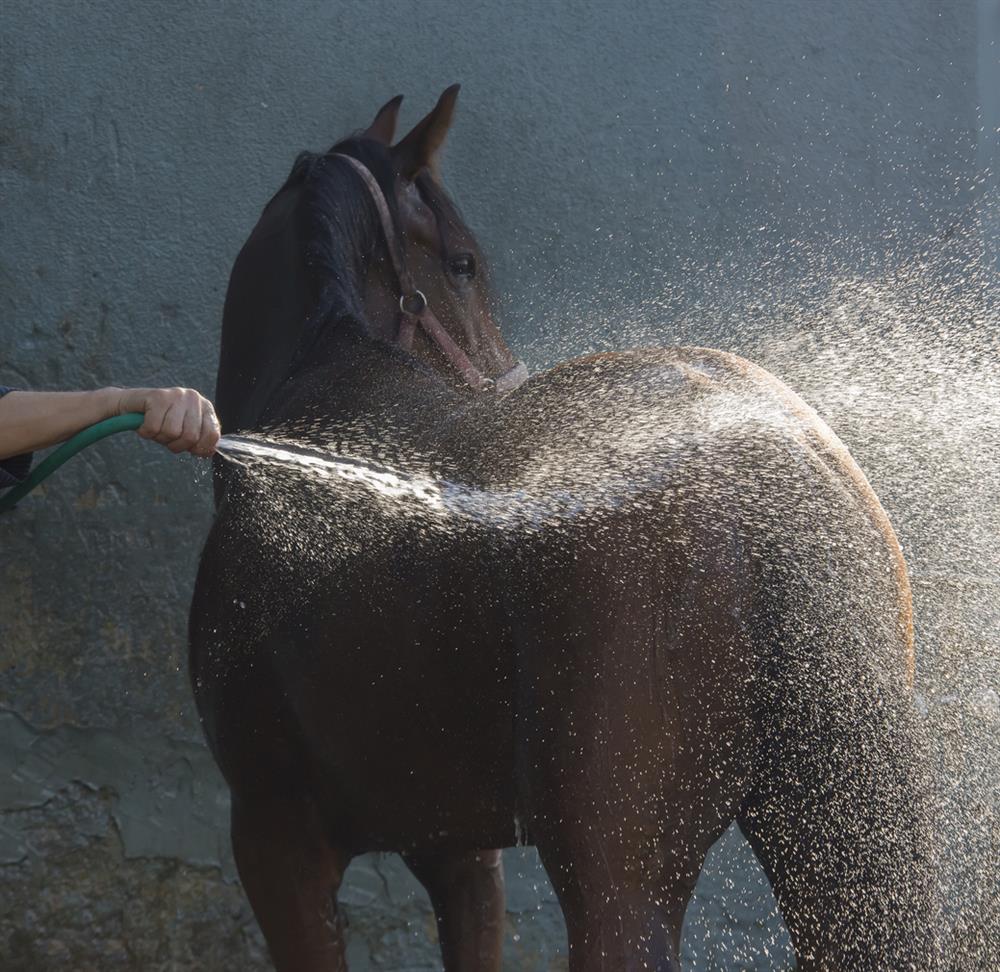Whether you’re at home with your furry companion or out at a competition, hydration is key. Before grabbing your hat and boots or your dog’s lead, consider whether they are well hydrated and how you can reduce the risk of dehydration.

What is dehydration?
Dehydration is when the body is losing more fluid than it is taking in. This can cause serious problems and is even life-threatening if it is not treated in time. Excessive sweating from strenuous exercise, especially in hot weather, can rapidly result in dehydration. Horses have sweat glands over the majority of their body and mainly sweat around the neck, chest, between their hind legs and under tack, whereas dogs lose moisture via panting and can sweat through their paws.
Not drinking enough is another cause, particularly in young animals that are reliant on their mothers’ milk to provide them with enough fluids. Diet also plays a part in keeping them hydrated, with foods higher in moisture contributing to the total water intake. Diarrhoea, vomiting (dogs only, as horses can’t vomit), heat stroke and other illnesses can also result in the animal becoming dehydrated. Knowing how much your horse or dog normally drinks will help determine whether they could be at risk of dehydration.
Common signs of dehydration in horses:
- Lack of energy, lethargy and poor performance
- Depression
- Dark coloured urine or urinating less than normal
- Skin pinch test - If your horse’s skin remains where it is for a prolonged period of time when it is pinched on the neck
- Lack of appetite and/or not drinking as normal
- Dry and tacky inside the mouth and nostril
- Gum test - Press on their gums firmly with your finger and then remove, the gums will turn white but should return to the normal pink colour quickly, if they don’t dehydration is possible.
Common signs of dehydration in dogs:
- Panting
- Dry nose and gums
- Loss of skin elasticity and sunken eyes
- Lethargy and lack of energy
- Lack of appetite and/or not drinking as normal
- The skin pinch test can also apply
- The gum test can also apply
One or more of these signs could mean that your horse or dog is dehydrated and you should take action to rehydrate them. If symptoms persist and you are concerned, it is recommended to speak with your veterinarian.
How to reduce the risk of dehydration?
Provide Water
Always ensure fresh, clean water is available. If you are out at a competition, offer your horse water regularly and do not restrict the amount they drink. If travelling long distances, then ensure you take stops on your journey to offer water along the way. Take plenty of water with you from your own yard as some horses may turn their nose up at unfamiliar water. If reluctant, you could try adding some apple juice or chopped up fruit or vegetables to encourage drinking.
These same principles apply to dogs, you could try flavouring their water or giving them ice cubes to encourage drinking.

Keep them cool
As horses lose a lot of water through sweating, make sure to warm up and cool down your horse appropriately. Its best to cool your horse off as quickly as possible after exercise, this can be achieved by hosing them off with cold water or by using a bucket and sponge. It is now understood that the best way to cool horses is to let the water evaporate from the horse and not to scrape the water off. As the water evaporates from the body surface it takes heat with it, helping to cool the body.

The time when you exercise is also important. If possible, try to exercise your horse in the morning before it gets hot or in the evenings as the temperature begins to drop.
You should also provide shelter from the sun whether you are away at a competition, or they are in the field at home.
For dogs, try to take them for a walk early in the morning or late in the evenings when it is cooler. Cooling jackets or vests can be very beneficial for working dogs that typically may be out in the heat for prolonged periods or doing hard, strenuous exercise.
Electrolytes
Horses lose minerals when they sweat, mainly Sodium, Chloride, Potassium and Calcium. Providing electrolytes on a daily basis appropriate to your horse’s workload, will replace the electrolytes lost from the body and restore their balance. The addition of Sodium (salt) can also encourage your horse to drink and access to a salt lick can help to keep them hydrated.
Dogs can also be given electrolytes, especially during the summer months or if in hard work such as agility or gun dogs.
Diet
Grass has a much higher water content than hay so turning your horse out, if possible, will increase their water intake, although this may not be suitable for animals with health concerns or on a weight management programme. Haylage also contains more water than hay, however, this may not be appropriate for all horses, so spraying hay down with water or soaking it can help.
The type of feed you use can also influence hydration, as some horses might not drink much from their water bucket. The use of feeds that can be soaked are a useful tool or just adding extra water to their feeds can be sufficient to increase intake.
For dogs, dry food can be soaked prior to feeding, or wet food can be added to the diet to increase water intake.
If you have any concerns or questions about your horse’s or dog’s nutritional needs, please don’t hesitate to contact our Science and Nutrition Department.

